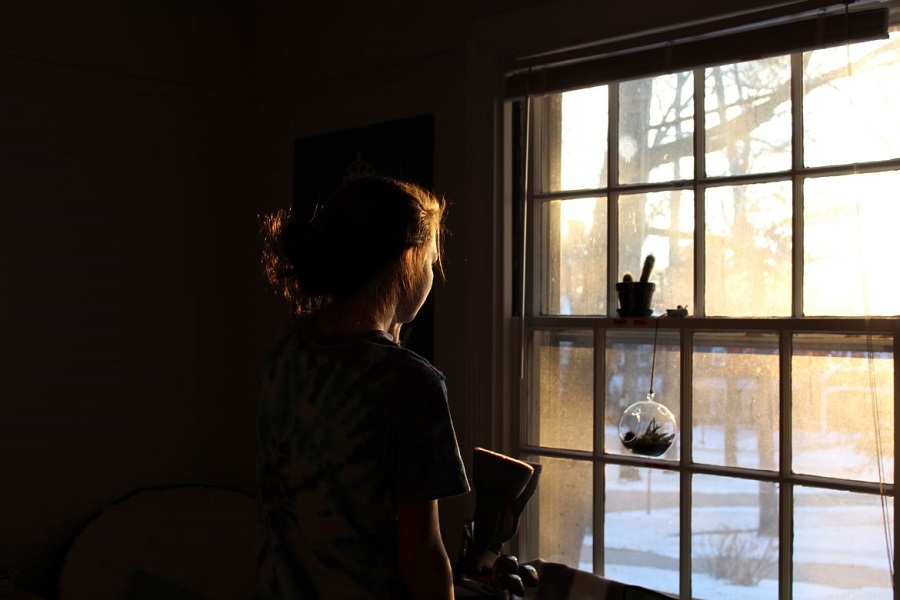During winter, it’s not uncommon to feel less energetic and motivated. Whether due to the colder weather or lack of daylight, it is also not uncommon to spend less time outside – all of which can impact our mood. For some individuals, this seasonal mood change can develop into a form of clinical depression called Seasonal Affective Disorder (SAD).
What is Seasonal Affective Disorder?
SAD is a type of depression that comes and goes with the seasons, typically starting in the late fall or early winter and subsiding during the spring and summer. Depressive episodes linked to the summer can occur, but are much less common than winter episodes of SAD. It’s important to recognize that those who suffer from SAD may feel as depressed as those who experience major depression. In general, symptoms of seasonal affective disorder can include decreased energy, difficulty sleeping, loss of interest in activities, difficulty concentrating, depressive feelings, appetite or weight changes, feeling sluggish, and/or social withdrawal. A formal diagnosis is often given after two to three years of symptoms that fluctuate with the seasons.
Risk Factors of SAD
While the research isn’t clear about what specifically causes SAD, there are known risk factors. One such factor is vitamin D deficiency, which can be related to lack of sunlight, as vitamin D is known to help regulate the hypothalamus. Without sufficient quantities of vitamin D, the body’s circadian rhythms can become disrupted, thereby affecting melatonin (the “sleep” hormone) and serotonin (the “happy” hormone) levels. In other words, our sleep, mood, and appetite are compromised. Specifically, some people with SAD produce more melatonin which can increase feelings of lethargy and fatigue.
Others experience increased sugar and carbohydrate cravings as a result of decreased serotonin which helps to regulate appetite. This paired with holiday treats and social gatherings can contribute to weight gain, which can further disrupt hormone balance. Serotonin also regulates mood, therefore imbalances can contribute to increased irritability and the feelings of sadness. Overall, boosting vitamin D levels can be an effective way to support mood and energy as well as immune function which is also important during the winter months.
Another risk factor can be family history and genetics. While the relationship isn’t completely linear or “cause and effect”, certain genetic variants have been associated with SAD. When talking about genetics, it’s important to keep in mind that one’s genetic profile is not a blueprint of what will happen, but rather provides indication of one’s predisposition. In other words, our genes are not our destiny. Environmental factors such as diet, toxins, stress, and nutritional deficiencies are just a few of the things that influence how our genes are expressed.
How to Treat Seasonal Affective Disorder
Due to the various mechanisms that play a role in SAD, successful treatment modalities can vary between individuals. Below are a just a few idea for how to treat SAD:
Light Therapy
If you experience less daylight where you live through the winter months, consider getting a light box! To date, this may be one of the most effective treatments for SAD. Using a light box provides exposure to artificial light during the darkest months. Many people find that 15 to 30 minutes per day leads to noticeable improvements over the first few weeks. Because some light boxes can expose you to UV rays, it’s important to discuss the options with your provider. Other side effects can include eye strain or headaches.
A few things to consider when using a light box:
- Position your light box at an angle to prevent the light from reaching your eyes directly. Remember to avoid looking at the light box to prevent possible damage to your eyes.
- Keep in mind that certain medications and supplements can make the retinas more sensitive to light and can therefore, increase the risk of eye damage. Be sure to discuss your current supplements and medications with your provider prior to using a light box.
- Consider wearing special eyeglass lenses or clip-ons to filter out blue light during your treatment. These can also be worn while using your cell phone or computer!
Nutrition
Eating high amounts of omega-3’s can help nourish the brain in addition to combating inflammation in the body—including in the gut where 85% of neurotransmitters, like serotonin and dopamine, are made. Eating foods like wild caught salmon, walnuts, or chia seeds are great sources.
It’s also important to consume adequate amounts of quality protein such as wild caught fish, organic eggs, cashews, and organic turkey as these foods contain high amounts of L-tryptophan, which is a precursor to serotonin. Appropriate amounts of healthy fats and protein also help regulate blood sugar levels which can decrease inflammation, promote better mood balance, and regulate hunger.
Exercise
Even three to four days per week of exercise has been shown to ease symptoms of depression. Moving our bodies causes a release of “feel good” chemicals such as endorphins and dopamine which can increase concentration, motivation, and improve mood. Consider high intensity interval training (HIIT) workouts a few days per week, as it has amazing physiologic and metabolic benefits. Keep in mind that while there is research to support the efficacy of a variety of exercise programs, the best one you can choose is one that you enjoy and that’s sustainable for you!
Cognitive Behavioral Therapy
Cognitive Behavioral Therapy (CBT) is a psycho-social intervention that targets improving mental health by working to change challenging and unhelpful cognitive distortions and behaviors, improve emotional regulation, and develop personal coping mechanisms. Specifically, CBT for SAD targets a “psychological vulnerability, specifically maladaptive thoughts through cognitive restructuring and avoidance behaviors through behavioral activation,” whereas light therapy targets a chronobiological vulnerability. A study published in the American Journal of Psychiatry found that CBT was superior to light therapy and may provide long term benefit.
If you are needing more support during these long winter months in addressing Seasonal Affective Disorder, schedule an appointment with a Newbridge provider!


